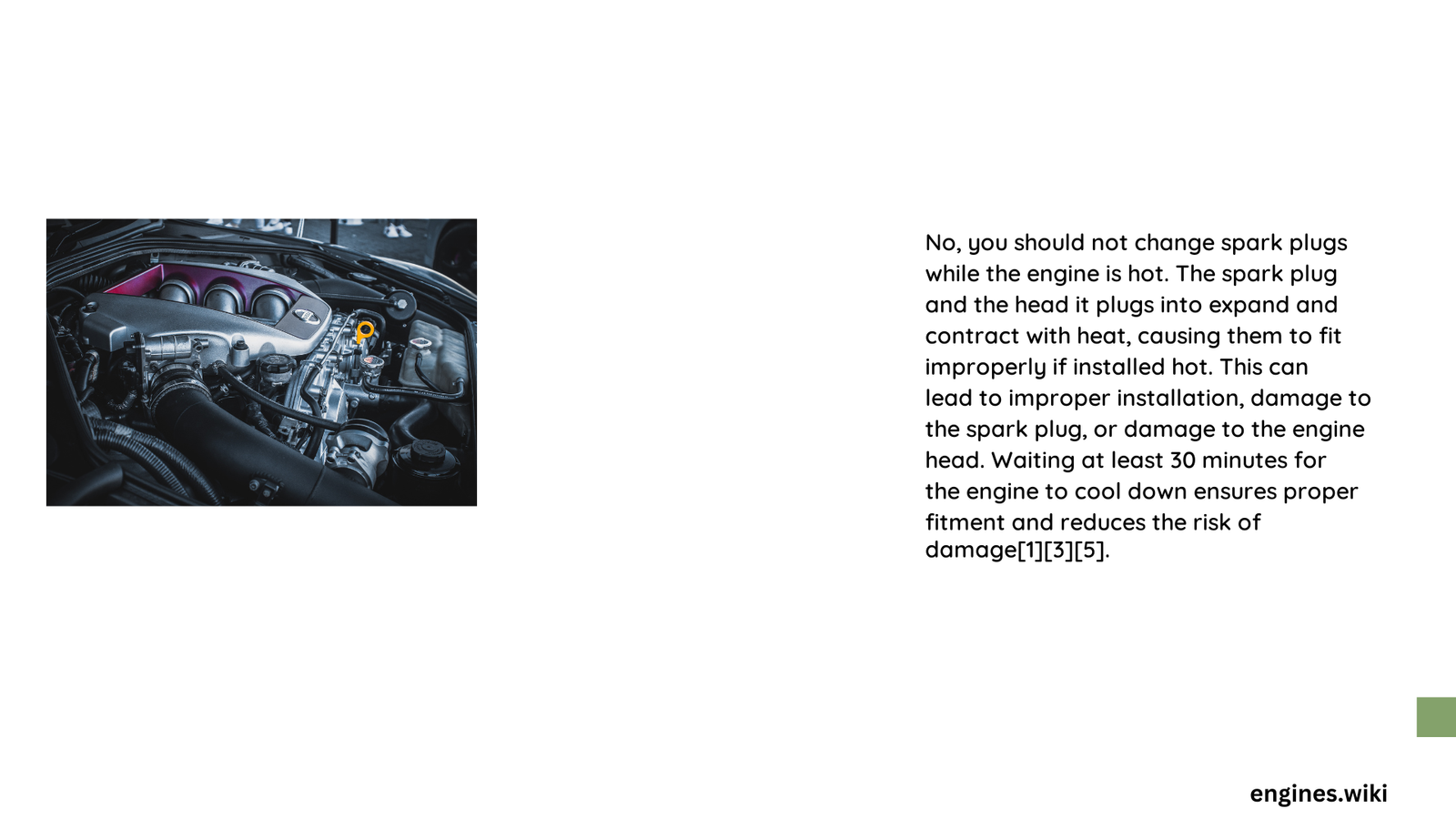Changing spark plugs on a hot engine is a risky automotive maintenance task that can lead to severe mechanical damage, potential personal injury, and costly repairs. Vehicle owners must understand the critical safety protocols and temperature thresholds before attempting spark plug replacement. This comprehensive guide will explore the dangers, recommended practices, and step-by-step approach to safely changing spark plugs while protecting both your vehicle and yourself.
Why Should You Not Change Spark Plugs on a Hot Engine?
Changing spark plugs while the engine is hot poses multiple significant risks that can compromise your vehicle’s performance and your personal safety. The primary concerns include:
What Happens When Spark Plugs Are Removed from a Hot Engine?
- Thread Damage
- Aluminum cylinder heads become significantly weaker at high temperatures
- Increased risk of thread stripping or permanent damage
-
Potential costly engine repairs
-
Thermal Expansion Risks
- Metal components expand differently at high temperatures
- Increased likelihood of improper fitting
- Potential seal and gasket complications
What Are the Personal Safety Risks?
| Risk Category | Potential Consequences |
|---|---|
| Burn Injuries | Severe skin burns from hot metal surfaces |
| Fire Hazards | Potential fuel ignition near hot components |
| Mechanical Injuries | Accidental slips or cuts in tight engine spaces |
How Long Should You Wait Before Changing Spark Plugs?

Experts recommend waiting 2-3 hours after engine shutdown to ensure:
– Complete temperature normalization
– Safe handling of engine components
– Reduced risk of thermal-related damages
What Tools Do You Need for Safe Spark Plug Replacement?
Essential tools include:
– Spark plug socket
– Torque wrench
– Heat-resistant gloves
– Penetrant fluid
– Safety glasses
– Spark plug wire pliers
What Are Recommended Safety Precautions?
- Disconnect battery before starting
- Ensure proper ventilation
- Wear appropriate protective gear
- Work in a clean, organized workspace
- Follow manufacturer’s specific guidelines
How to Prevent Potential Damage?
- Allow complete engine cooling
- Check manufacturer’s recommended spark plug replacement procedure
- Use correct torque specifications
- Inspect threads and surrounding components before installation
Professional Recommendations
Automotive professionals universally advise against changing spark plugs on a hot engine. The potential risks far outweigh any perceived time-saving benefits. Always prioritize:
– Vehicle longevity
– Personal safety
– Proper maintenance techniques
Expert Tips
- Use a temperature gun to verify engine coolness
- Never rush spark plug replacement
- Consider professional assistance if uncertain
Final Thoughts on Spark Plug Replacement
Changing spark plugs requires patience, precision, and respect for thermal dynamics. By following recommended cooling periods and safety protocols, you protect your vehicle’s intricate engine components and ensure a successful maintenance procedure.
Reference:
– Automotive Maintenance Guidelines
– Engine Safety Protocols
– Professional Mechanic Recommendations
